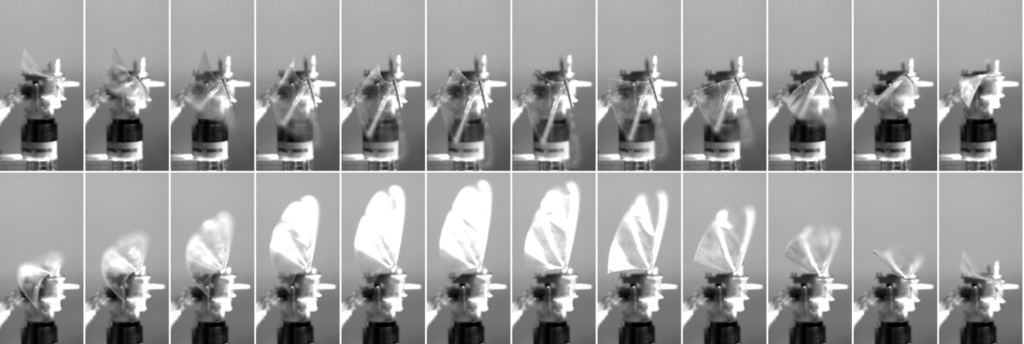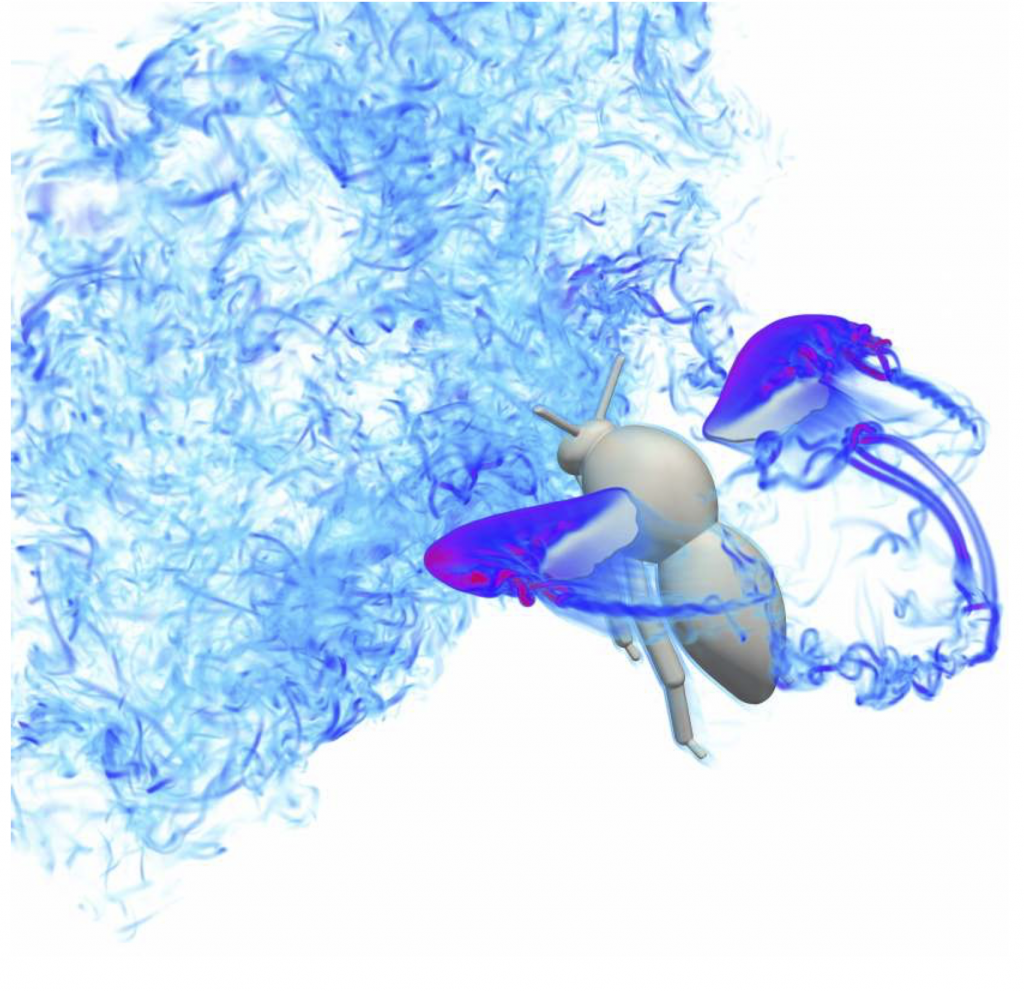
R. Antier, B. Thiria, & R. Godoy-Diana
Journal of Fluids and Structures, 124, 104043 (2024).
doi: 10.1016/j.jfluidstructs.2023.104043
We study the aerodynamics of a flapping flexible wing with a two-vein pattern that mimics the elastic response of insect wings in a simplified manner. The experiments reveal a non-monotonic variation of the thrust force produced by the wings when the angle between the two veins is varied. An optimal configuration is consistently reached when the two veins are spaced at an angle of about 20 degrees. This value is in the range of what has been measured in the literature for several insect species. The deformation of the wings is monitored during the experiment using video recordings, which allows to pinpoint the physical mechanism behind the non-monotonic behaviour of the force curve and the optimal distribution of the vein network in terms of propulsive force.
